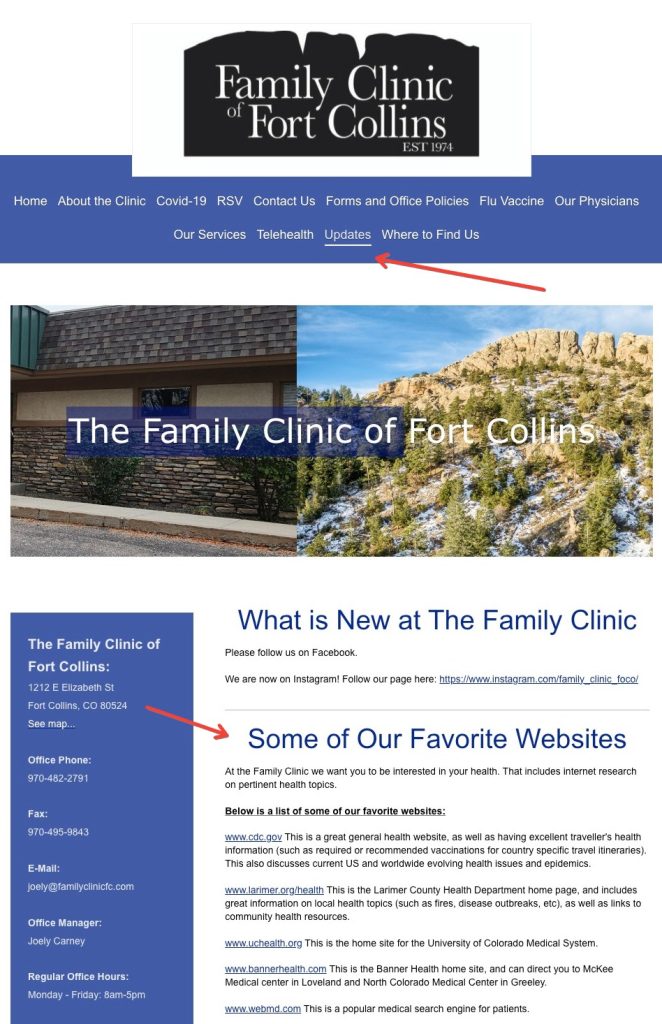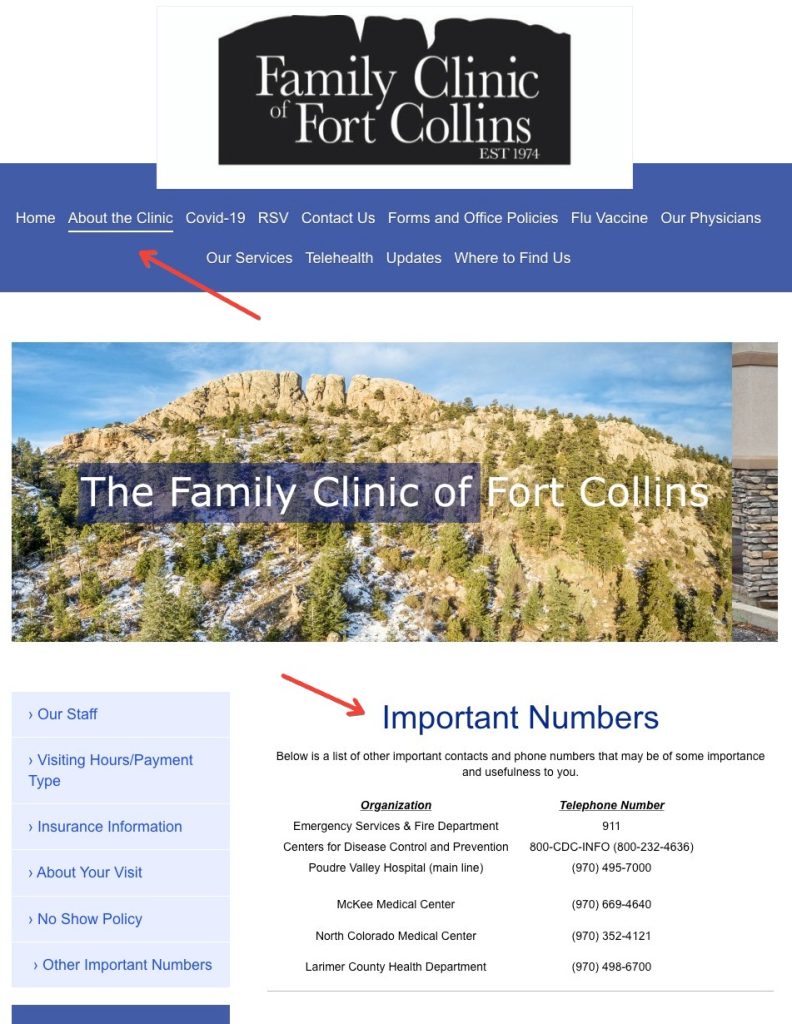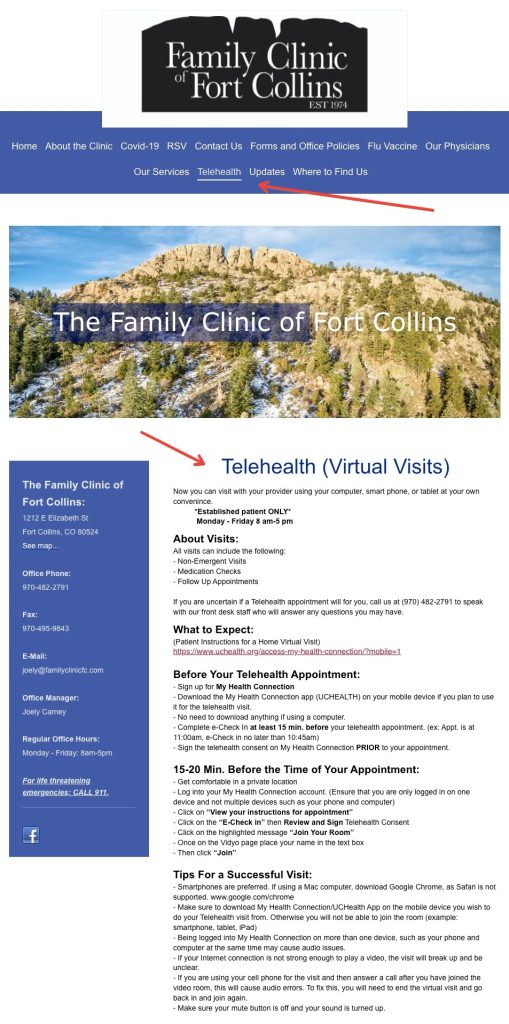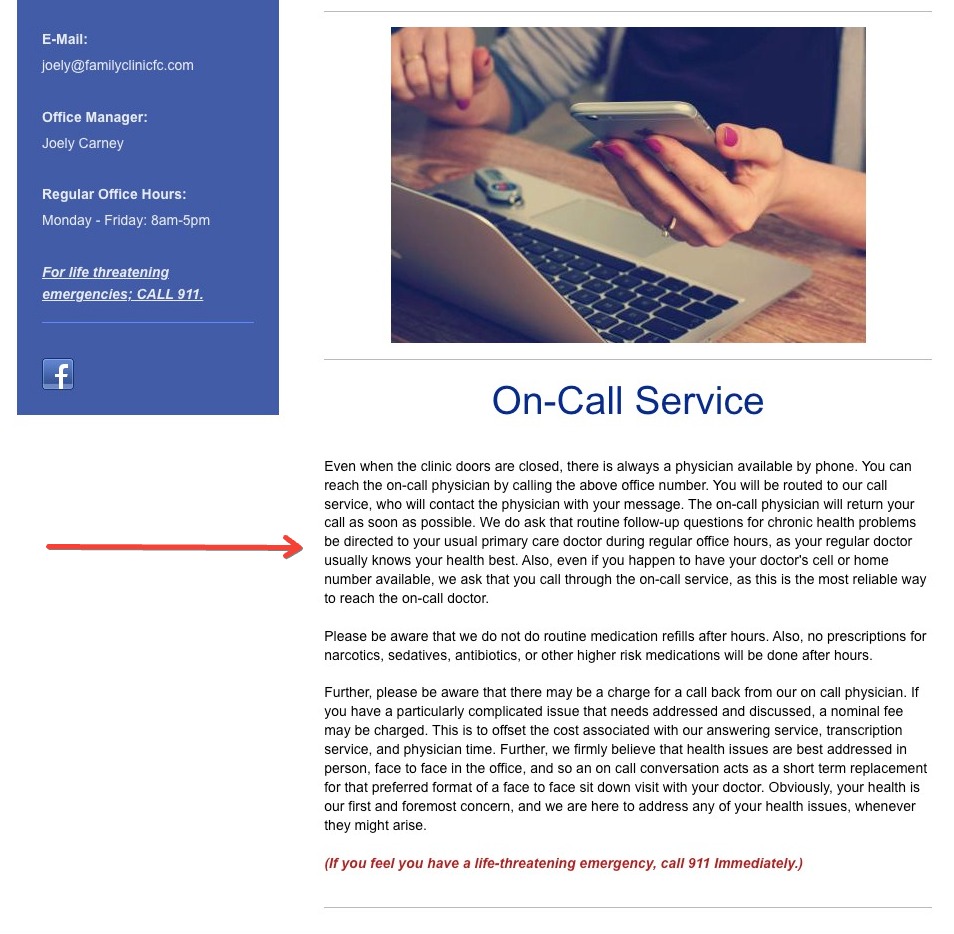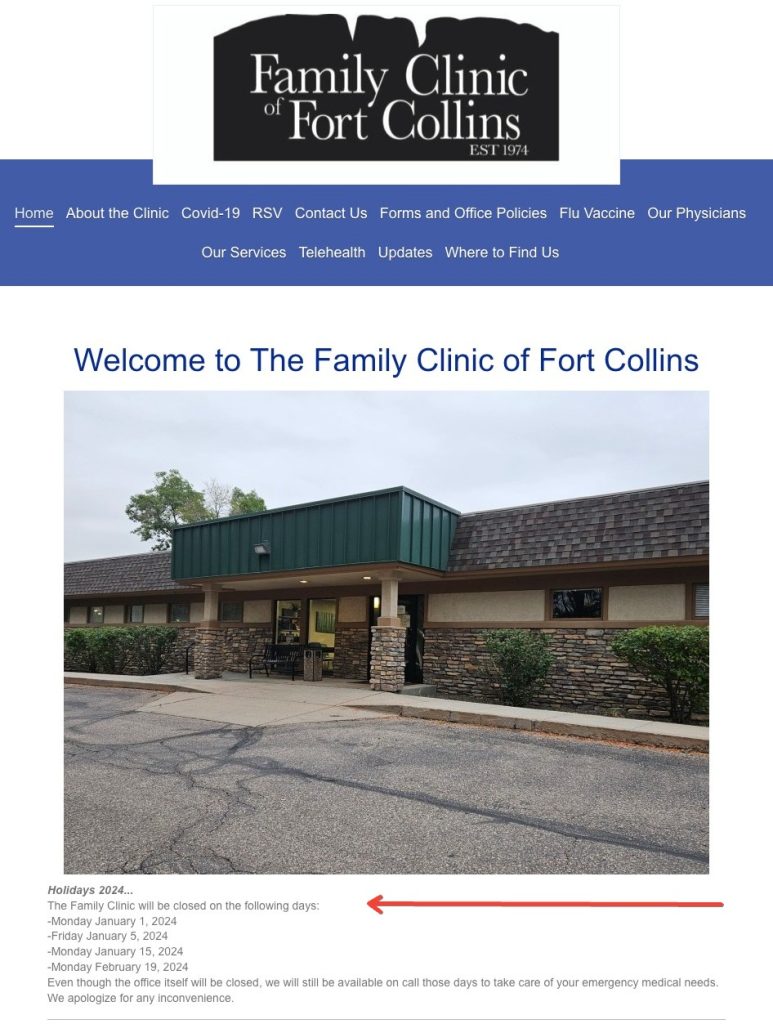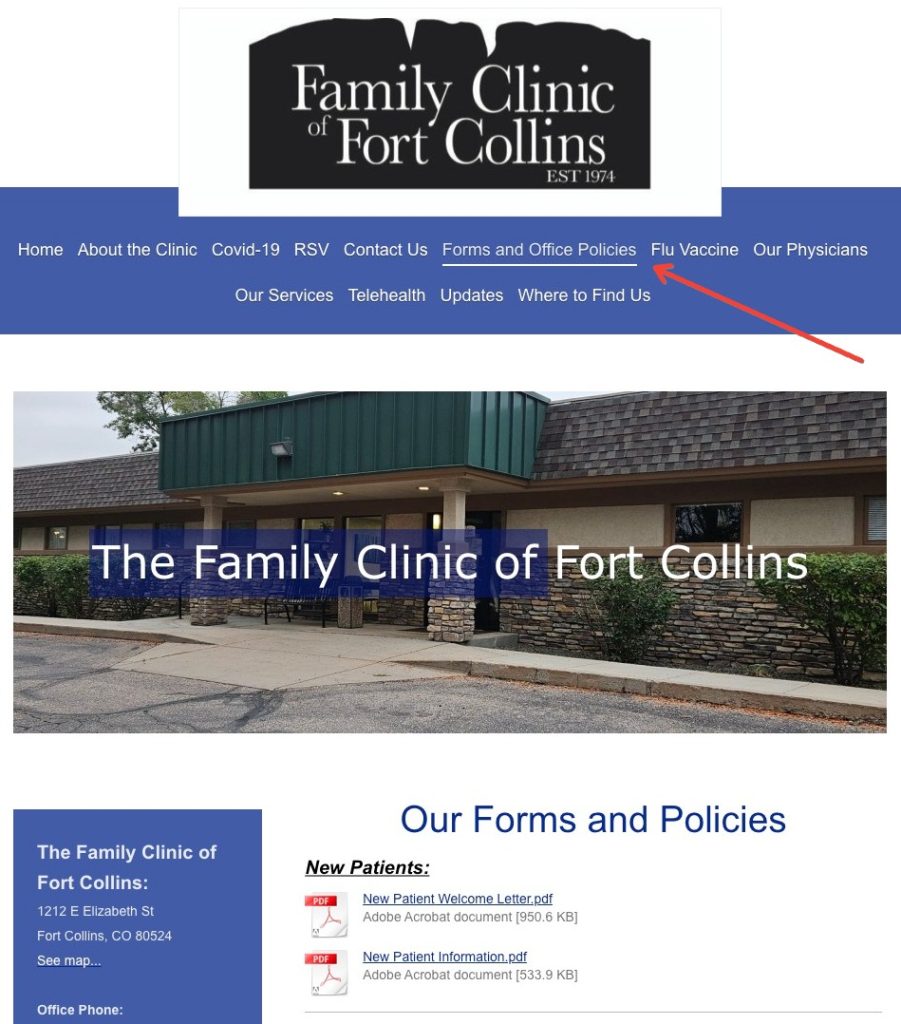CMO message from Amy Scanlan, MD
Helping Patients Understand the Best Place to Go for Care Is Part of Our Job

“I am sure it was easier to go to the ER for your ear pain, but next time let’s get you seen in our office” ………” Haven’t we all had that conversation?
As we work together to improve healthcare, preventing non-emergent emergency department (ED) visits should be a major focus of our work. Even as the number of brick-and-mortar EDs across the country has fallen, the number of visits to the ED has increased . And, as we all know, patients do not always use the ED for what it was truly built to do – treat life-threatening medical issues.
So, how do we do help patients understand the differences? Data from the Agency Healthcare Research and Quality (AHRQ) shows that between 13-27% of ED visits could be taken care of in a primary care office. How do we help patients to decide where to go, and how do we ultimately help them use the ED for truly emergent care? Here are a few ideas:
Educate patients about their different care options.
Patients are often unaware of what can be cared for in different care settings. A 2017 survey of patients by CityMD revealed that patients often had a difficult time deciding whether to go to the ED or urgent care for a non-life-threatening emergency. Creating a “Know Where to Go Guide” for your patients, with visuals, can be helpful. Short videos posted on your website, laminated cards to give to patients, and even highway billboards have all been used successfully.
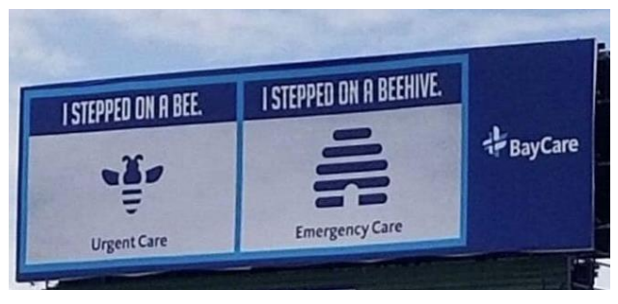
Educate patients about lower acuity care options near to them.
In addition to not always knowing “who takes care of what”, many patients are also unaware of the locations of nearby lower acuity options for care. Having a list of near-by urgent cares, or a map that shows where they are located, can be given out to patients, left out in the office waiting room, and posted as a resource on your practice website. Making patients aware of same-day, telehealth, and weekend appointment options that your office may offer can also help accommodate patients’ need for convenience.
Help patients manage their chronic illness well.
One of the most effective ways to keep patients out of the ED is to prevent them from getting sick enough to need emergency care. Keeping registries of patients with chronic illnesses and reaching out to them on a regular basis to ensure they are getting the preventative and ongoing care they need, can help with this. Ensuring they have access to care when they need it, and before they need it, can keep them well.
Don’t forget about social determinants of health (SDOH) factors.
For many of our most vulnerable patients, lack of transportation, housing, health literacy, and finances can all play a role in worsening illness, ultimately leading to a greater need for emergent care. Many community organizations can offer help with these areas, and connecting patients to these community partners can lead to better overall health. Care managers, care coordinators, social workers and community health workers can also play a role by educating patients about community resources available and connecting patients with those organizations.
Ultimately, we want our patients to be healthy and thrive. We all know that emergencies happen, and we want EDs to be there for us when they do. Inappropriate use of the EDs can lead to overcrowding, leaving them less able to provide the high-quality emergent care we want for our patients. Focusing on good preventative care, disease and SDOH management, education, and access will ultimately help our patients stay healthy and out of the ED.
[1] Nguyen CA, Shih JA, Lin KV, Aladesanmi OA. Targeting national emergency department overuse: a case for primary care, financial incentives, and community awareness. Harvard Health Policy Rev. 2014;14(1):23-26
[1] Patient Knowledge Impacts Use of Urgent Care, ED Services (patientengagementhit.com)

Spotlight: Family Clinic of Fort Collins
Family Clinic of Fort Collins (FCFC) is a practice of 7 providers in Northern Colorado who have had great success minimizing unnecessary emergency room visits. For the past two years, they have led our network in keeping their patients out of the ER. FCFC attributes this success to prioritizing the education of all their patients about where to go for appropriate care.
At FCFC, staff guide new patients to their website to fill out new patient forms and familiarize themselves with office policies. The website clearly calls out the availability of an on-call provider–24 hours a day, 7 days a week—their “Call us First” campaign. The website notes extended office hours, holiday closures, and reinforces that even though the practice is closed, the staff is on call and available 24 hours a day and encourages them to call the on-call provider prior to heading to the emergency department (ED). The website also clearly offers telehealth options – outlining step by step instructions about how to schedule telehealth visits, what to expect from a telehealth visit, and when this type of visit is appropriate. Additionally, there is a “New Patient letter” specifying how patients can access care to avoid costly emergency room visits. All of these tools encourage patients to reach out with questions or concerns at any time and reinforces the practice website as a source of information.
Finally, the web site provides additional info that patients can use for general questions. These include:
- The Cold and Flu Tip sheet,
- A list of Important numbers for the medical centers in the area,
- As well as a “Some of Our Favorite Websites” section, allowing patients to research and stay informed on health topics through reputable websites such as http://www.cdc.gov, http://www.larimer.org/health, http://www.pvhs.org, and http://www.bannerhealth.com.
All of these tools provide education and options for the patient before deciding to visit an ED, and the practice feels they all contribute to a low rate of ED utilization. Feel free to borrow any for your practice or download the flyer options in the Resources section below.
Reflections: Articles and podcasts from outside experts:
- Reasons Patients Choose the Emergency Department over Primary Care: a Qualitative Metasynthesis – PMC (nih.gov)
- Why Do People Choose Emergency and Urgent Care Services? A Rapid Review Utilizing a Systematic Literature Search and Narrative Synthesis – PubMed (nih.gov)
Consumer Focused Articles for your Patients
